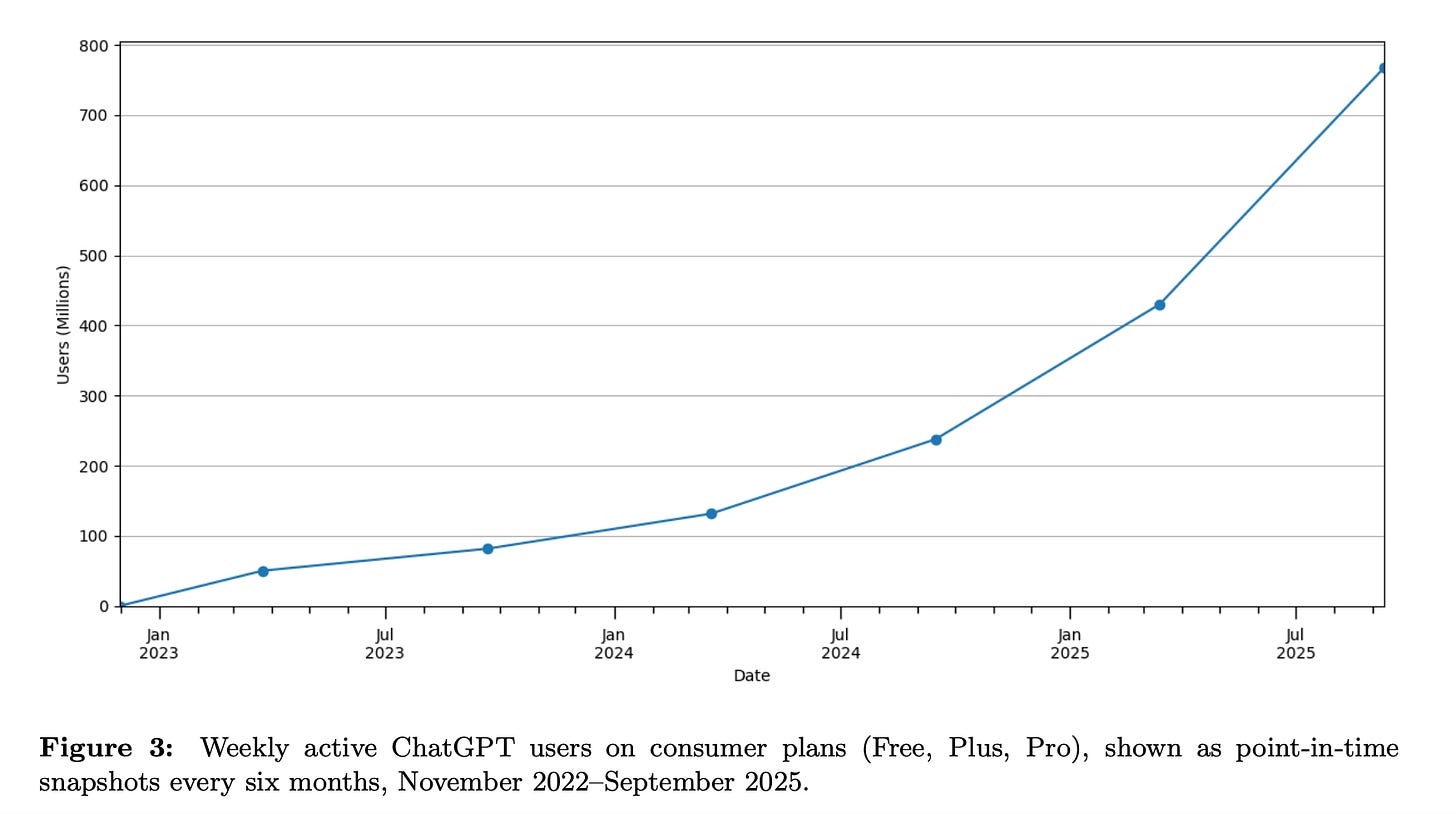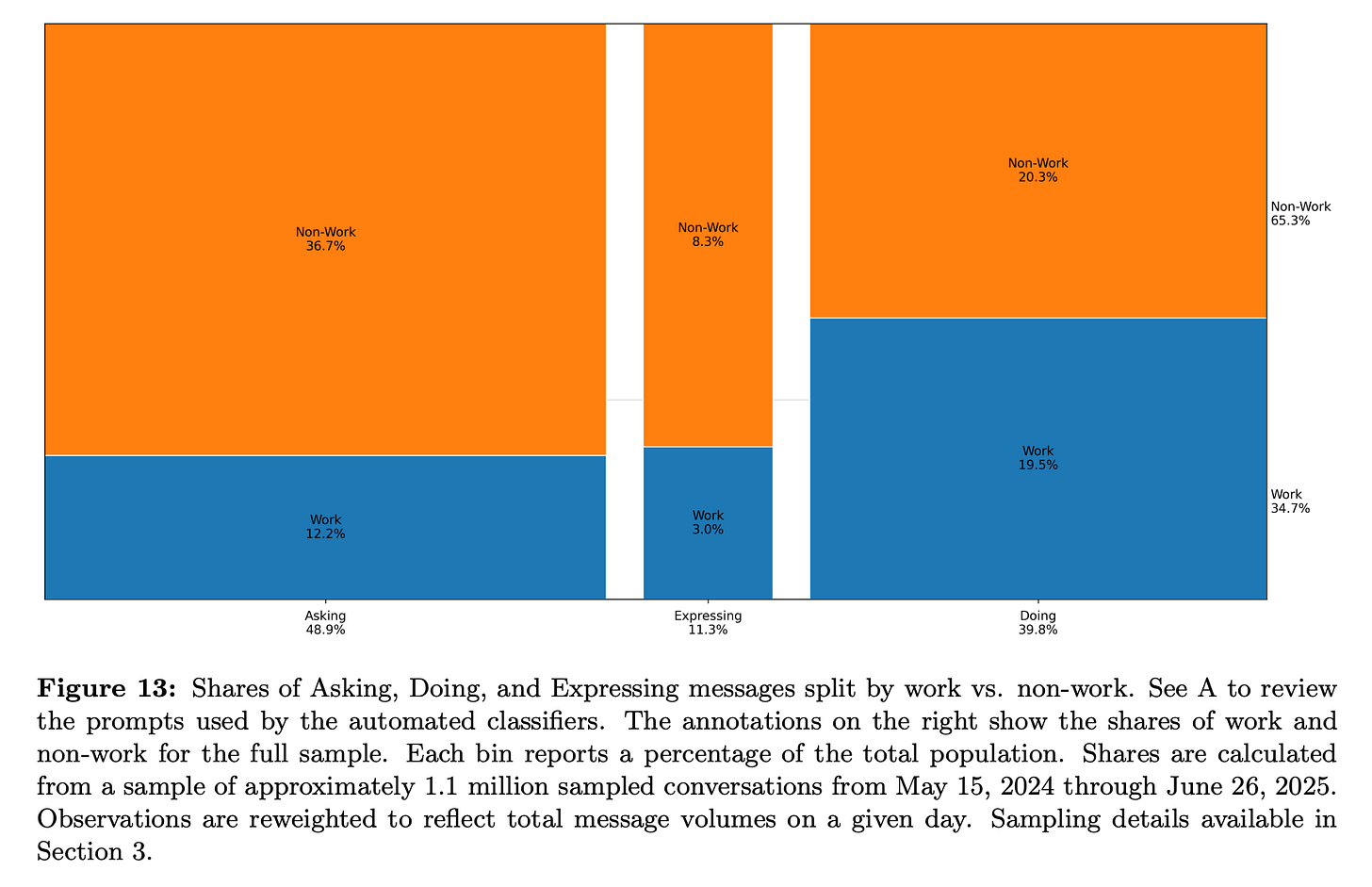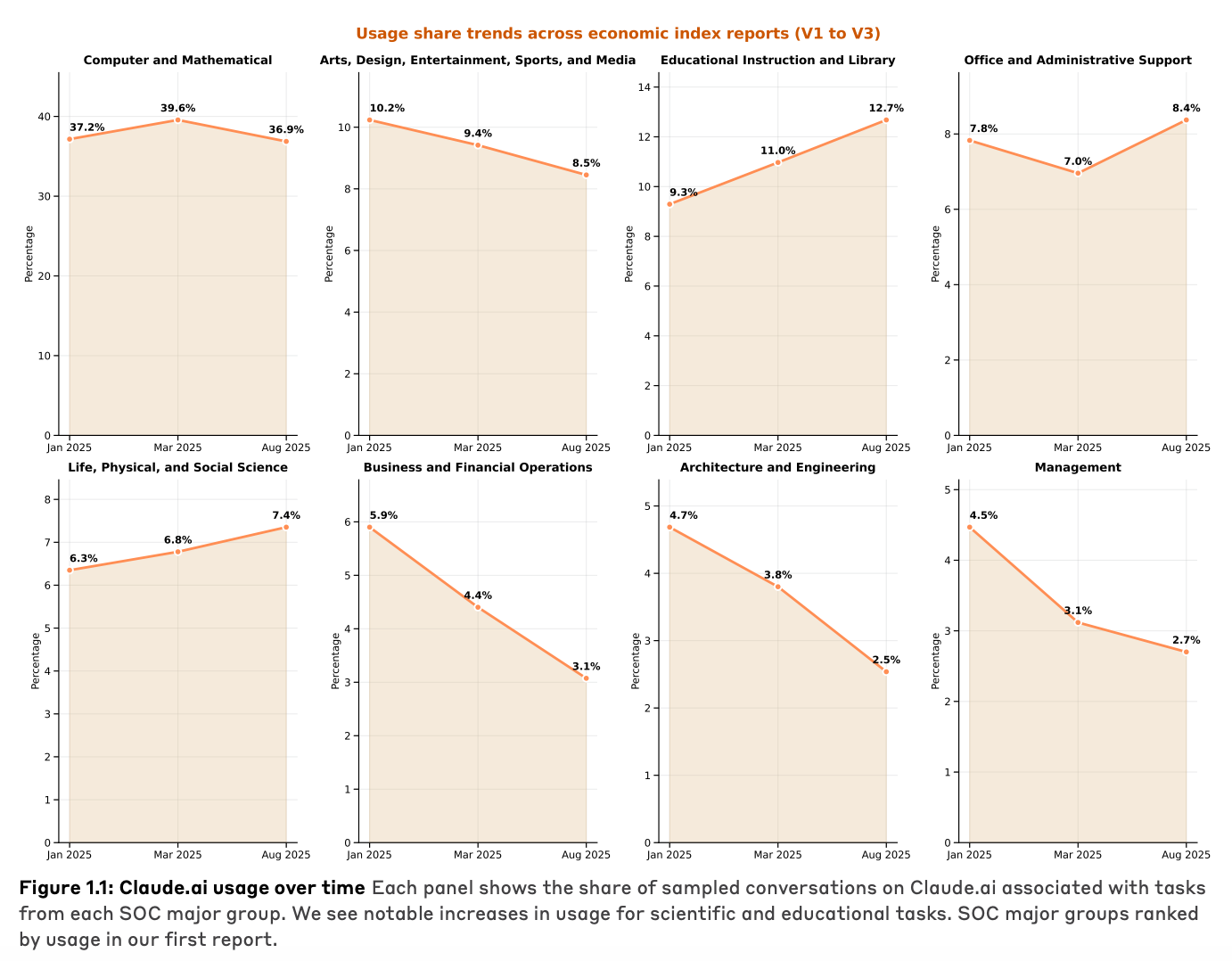Has generative AI changed the world yet?
An early look at adoption patterns
By every metric that matters to Silicon Valley—funding rounds, user growth, media coverage—generative AI appears to be revolutionizing everything. But peek behind the curtain at how companies actually use these tools, and a different story emerges.
So money money, so much building, such massive adoption—it looks like generative AI is poised to change the world. Lots of entrepreneurs, investors, economists, and regular folks agree. Has it, though? Not yet. But it’s still early in the game.

For generative AI to have the massive economic impact that its biggest investors seem to expect, I suspect it would need to give rise to an entirely new generation of major companies and change the way the best incumbent firms operate. I would expect to see fundamentally new business models, major industry disruption, and consistent double-digit productivity leaps. We are not seeing that yet. This is the impression you get if you look at how companies are actually using the technology. For now, at least, I think we are instead seeing the rise of the next Facebook or Google or Microsoft, which may precede industry-wide transformations to come.
In the coming months, as part of my research at the Belfer Center, I aim to identify and speak with dozens of companies that have deployed AI-based solutions that are making a material impact on their business. I hope to get at exactly how AI is (or is not) creating value at those companies, and what impact AI solutions are having on workers. Until I get those interviews going, I’m looking at other data to get a feel for what companies are up to. I’m starting by looking at what major generative AI vendors OpenAI, Anthropic, and Google have published. First I’ll look at analyses of customers’ usage patterns. Then I’ll look at what applications customers have deployed.
OpenAI and Anthropic have recently released data on what their customers and users are doing. OpenAI shared their data with a team of researchers who published an analysis, which its authors said was “the first economics paper to use internal ChatGPT message data.” Anthropic published its own analysis along with the data it collected on its users. Both companies provided detailed explanations of how they protected the privacy of their users in the course of these analyses.
These analyses show that ChatGPT is fundamentally a consumer application, not primarily a business tool. Only a quarter of ChatGPT usage is work-related. Most of that usage—about 81% of work-related messages—”is associated with two broad work activities: 1) obtaining, documenting, and interpreting information; and 2) making decisions, giving advice, solving problems, and thinking creatively.” Used this way, ChatGPT can potentially boost productivity and improve the quality of work. That’s certainly been my personal experience. (I kind of hate how readily Claude and ChatGPT find ways I can improve my writing.) Studies show mixed results on these dimensions, however. And, as I noted above, ChatGPT is not used primarily for work.

OpenAI does offer an “enterprise” service that enables companies to connect their own software to its AI models via an API (application programming interface). But they’ve not released data on how companies are using their API, and most of their revenue comes from ChatGPT subscriptions.
Anthropic doesn’t have as many users or as much revenue as OpenAI. But it seems to be used more intensively for business purposes. Computer and mathematical tasks account for 36% of overall usage, with educational Instruction and Library tasks accounting for 12% and life, physical, and social science tasks another 7%. Anthropic did release data on how its API is used, and found that 77% of business uses involve automation usage patterns, meaning workflows where the AI was expected to complete tasks rather than iterate with humans.


I am looking for AI to completely change how companies operate. And this may be coming. But for now it seems the dominant usage of generative AI is through chatbots and so-called copilots—AI helpers integrated into software like Microsoft 365 Copilot, Salesforce Einstein Copilot, ServiceNow Virtual Agent Copilot. These can make workers more efficient and more effective. But it’s hard to see how they could be game changers.
Looking at the types of AI-powered applications enterprises (by which I mean big companies other than the leading AI firms) are deploying provides another perspective on how generative is getting used. So I’ve started to compile a database of AI applications based on what vendors, and eventually customers themselves, are talking about. I’ve got over 1100 applications so far, mostly (97%) from Google’s list of its customers’ applications plus searches I have done. This gives me another vantage point for describing what is happening in the market, starting with which industries are most active.
According to my data set, the technology, media, and telecom industry (TMT) has deployed far more AI solutions than any other - twice as many as the #2 industry, Retail & Consumer goods. The distribution of AI apps across these industries reflects, I think, a few factors:
Some industries, like TMT and financial services, are very digitalized already and/or tend to spend a lot on technology.
Chatbots are now a useful tool for customer service, a top application in retail and public sector organizations.
Only one of the public sector examples is at the federal level. The Trump administration’s AI Action Plan aims to change this quickly.
Generative AI has less obvious applications in industries like energy and agriculture. But its ability to analyze data is useful everywhere, and data-related applications are most common in those industries.
I would expect adoption among retail and travel companies to be stronger than this data suggests, possibly because it’s mostly Google data and Microsoft clients may be underrepresented.
I’ve classified the applications companies have built into six categories. The two most common categories, data agents and employee agents, account for over half of the examples I’ve collected. Data agents include tools for analyzing, forecasting, retrieving data or performing simulations. Employee agents are tools that support workers in drafting documents, automation workflow, and retrieving and summarizing information. Customer agents, which provide customer support, advice, and transactional assistance, among others, are in third place.
Most of these applications are aimed at increasing efficiency. Some may improve the experience a customer or an employee has interacting with a company, which can be valuable even if it can’t be measured as a productivity gain.
What I don’t see so far is transformative applications. We’re not yet seeing AI-native startups with 10-person teams outcompeting thousand-employee incumbents, or entire departments being restructured around AI workflows. I still have to dig deeper, but most of these applications seem able to provide modest benefits—worthwhile, but nothing that will transform an industry or our economy. These are yet to come.
For generative AI to justify the massive expectations surrounding it, we should see either automation that eliminates entire job categories or augmentation so powerful it enables new business models with radically different economics. The current data shows AI being used primarily for modest augmentation—helpful improvements to existing workflows rather than the kind of dramatic multiplier effects or new capabilities that reshape industries. Whether through automation or augmentation, transformative technology changes what’s economically possible, not just what’s incrementally better.
Have you encountered any truly transformative applications of generative AI? I’d love to hear about them.



